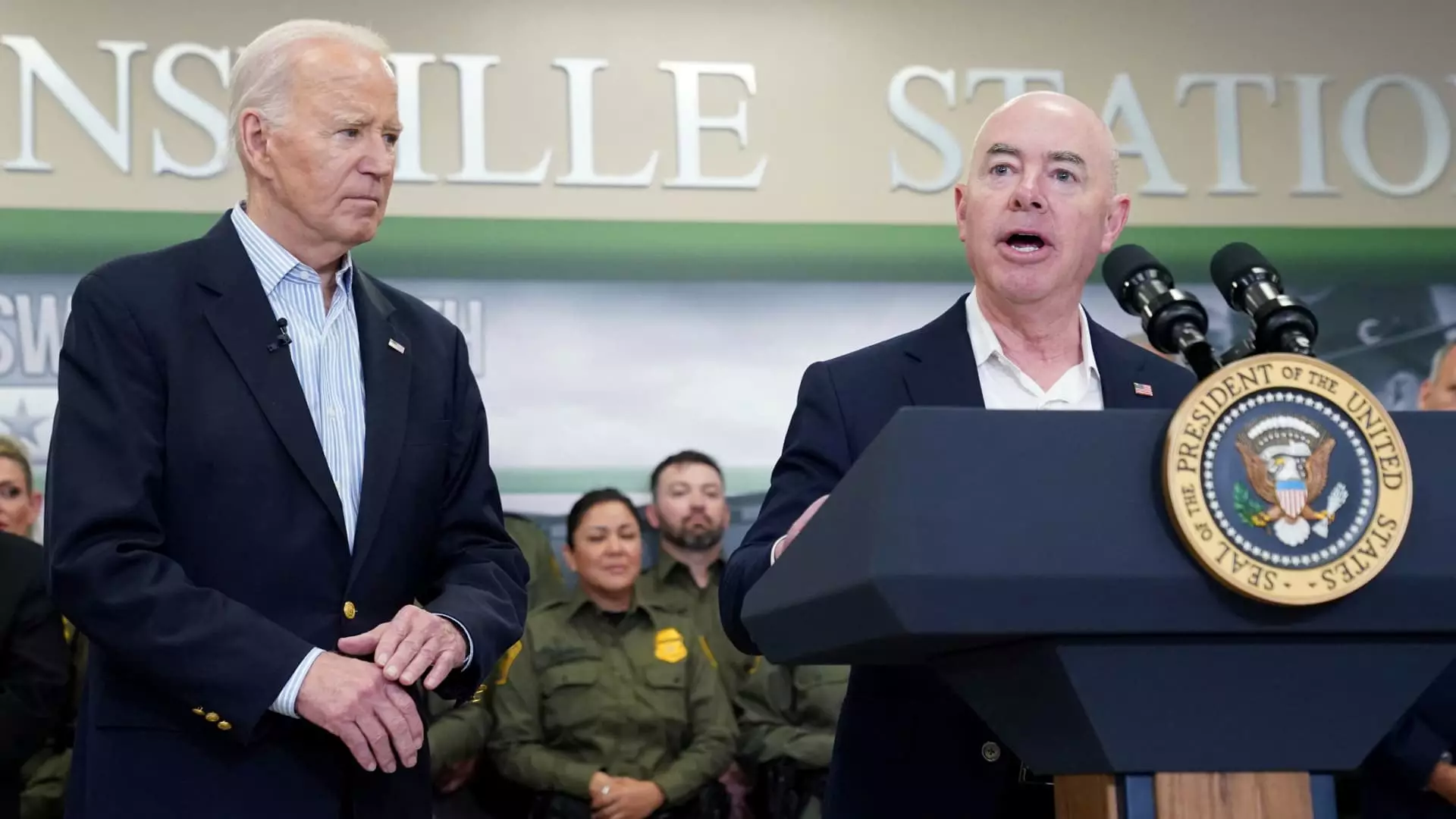In a recent interview on CNN’s “State of the Union,” Homeland Security Secretary Alejandro Mayorkas highlighted the limitations of managing the border solely through President Joe Biden’s executive action. While the White House is considering implementing stricter asylum standards and other policy changes without Congressional approval, Mayorkas emphasized that administrative actions are not a substitute for a lasting solution. This raises questions about the efficacy of using executive orders to address complex border issues.
The ongoing deadlock on border policy between the White House and Congress has turned into a political battleground, with Republicans accusing Biden of lacking the will to enforce basic border security measures. The back-and-forth between the two parties, as showcased by visits to southern border towns by both Biden and former President Donald Trump, reflects the highly politicized nature of this issue. The failure of Congress to pass bipartisan border proposals has left the Biden administration looking for alternative strategies to demonstrate progress on border management without legislative support.
The debate over border policy reform highlights the challenges of finding consensus on a deeply divisive issue. While Republicans blame Biden for the border crisis, Democrats argue that a comprehensive and enduring solution requires bipartisan cooperation. Mayorkas’ rejection of executive action as a panacea for border control underscores the legal and practical limitations of addressing complex immigration challenges through unilateral measures. The call for Congress to take decisive action on border legislation reflects the recognition that sustainable solutions require legislative backing.
While the Biden administration is exploring potential executive actions to address border challenges, Mayorkas and White House officials maintain that administrative measures are not a long-term fix. The emphasis on the need for Congress to pass effective border legislation highlights the limitations of relying solely on executive authority to implement lasting policy changes. The impasse in Congress has left the administration with few options but to seek incremental progress through administrative actions while pushing for legislative reforms.
As the Biden administration navigates the complexities of border management, the need for a comprehensive and sustainable strategy becomes increasingly apparent. The ongoing political deadlock underscores the challenges of enacting meaningful reforms in a hyper-partisan environment. While executive actions may offer temporary relief, a lasting solution requires bipartisan cooperation and legislative support. The urgency of addressing border issues demands a concerted effort to move beyond political posturing and prioritize effective policy solutions.


Leave a Reply